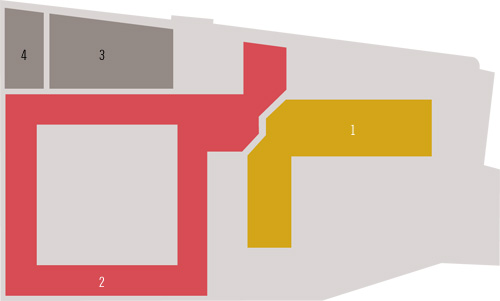The second floor is devoted to the age of hillforts covering both the development of the fortified villages during the Iron Age as their occupation during Roman times, especially in the gold mining areas. On the top floor of the old cloister of San Vicente can discover the intensity of Romanization in Asturias, in the hillforts and in the Villae and civitates. The model of the camp of La Carisa, the mines of Boinás, and the geometric mosaic Andallón are highlights of this part of the exhibition.
In the most noble of the plant eastern cloister is the cell of Father Feijoo, abbot of the monastery of San Vicente and leading figure of the Enlightenment in the first half of the eighteenth century in Spain.
Through the monumental staircase from the cloister of San Vicente, you can access another section: From colection into museum, which provides a brief review of the history of the museum, and also that of the Archaeology in Asturias.



